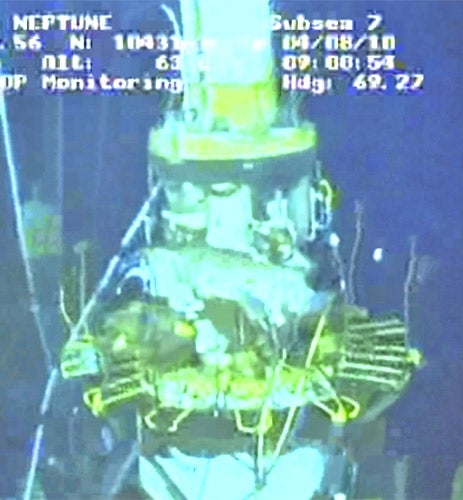Three-quarters of oil from Gulf spill 'has now been dispersed'

Three-quarters of the oil that has leaked from the Deepwater Horizon oil well in the Gulf of Mexico poses no further risk to wildlife according to an investigation. The finding was released as BP announced that its latest effort to seal the world's most notorious hole in the ground seems to be working, and President Barack Obama said the operation was "finally close to coming to an end".
The finding that only a quarter of the spill poses a threat now comes from an investigation by the US Interior Department and the American National Oceanic and Atmospheric Administration (NOAA). "It was captured. It was skimmed. It was burned. It was contained. Mother Nature did her part," the White House energy adviser, Carol Browner, said on NBC's Today show yesterday.
The federal report, shown to The New York Times, found that most of the oil from the leak has already evaporated, dispersed or been captured or otherwise eliminated from the ecosystem, and that much of the rest of the oil is so diluted that it poses little additional harm. "There's absolutely no evidence that there's any significant concentration of oil that's out there and that we haven't accounted for," Jane Lubchenco, the head of NOAA, told the paper.
Based on the quantity of oil released, the disaster is thought to be the worst oil leak in history. However, its long-term effect on marine wildlife is less easy to determine because the warm temperatures of the Gulf mean that much of the oil would have evaporated or been broken down naturally by oil-degrading microbes.
The NOAA report calculates that 74 per cent of the oil from the well has been effectively dealt with by capture, burning, skimming, evaporation, dissolution and dispersion. Much of the dispersed and dissolved oil will break down naturally in the environment, although the rate at which that will occur has yet to be determined.
The remaining 26 per cent of the oil "is on or just below the surface as light sheen or weathered tar ball, has washed ashore or been collected from the shore, or is buried in sand and sediments", the report says. There is no evidence of a huge, underwater slick that has yet to wash ashore, it says.
BP meanwhile claimed a significant milestone with its "static kill" technique of pumping heavy drilling mud into the well which, it said, has stabilised the pressure that was forcing oil to the seabed.
A "static condition" had been reached where the oil was being contained by the pressure of the additional heavy mud rather than having to rely solely on the cap that sealed the well head on 15 July.
"The well pressure is now being controlled by the hydrostatic pressure of the drilling mud, which is the desired outcome of the static-kill procedure carried out yesterday [Monday]," BP said.
Thad Allen, the US incident commander in charge of the disaster, said that the static-kill operation is only part of the effort permanently to make the well safe by drilling two relief wells that will intercept the leaking well.
"The static kill will increase the probability that the relief well will work. But the whole thing will not be done until the relief well is completed. The static kill is a diagnostic test that will tell us about the integrity of the casing and well bore," Admiral Allen said.
Kent Wells, BP's senior vice president, who is overseeing the operation, said that static-kill test went according to plan. "It went exactly as we would have expected," Mr Wells said. "A static situation means you can have just fluid in the hole and you don't need to have a valve shut at the surface to have the well killed. And that's the condition we're looking for," he said.
Oil spill glossary
Top kill
Attempts to stem the flow of oil by pouring dense mud through the top of the well. Abandoned in favour of other plans.
Static kill
Mud is injected lower down through a second pipe drilled for the purpose. The "static" refers to the objective of equal pressure between the mud and the oil.
Blowout preventer
A large valve at the top of the well that can be closed to prevent a leak. It failed on Deepwater Horizon.
Containment dome
The giant box lowered over the leak to corral the oil to the surface. It failed.
Top hat
A smaller version of the containment dome, which was considered but later abandoned.
Subscribe to Independent Premium to bookmark this article
Want to bookmark your favourite articles and stories to read or reference later? Start your Independent Premium subscription today.

Join our commenting forum
Join thought-provoking conversations, follow other Independent readers and see their replies